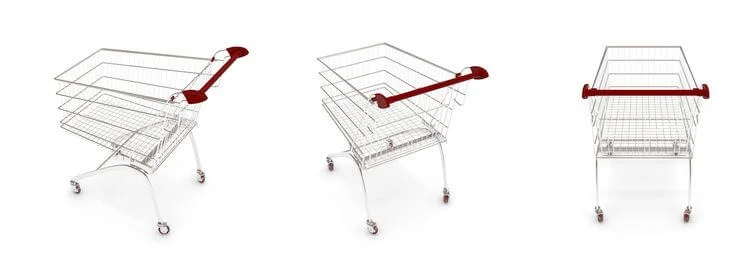10 Easy Ways to Reduce Shopping Cart Abandonment

Updated December 12, 2017

For ecommerce hosting users, abandoned purchases account for 25% of all ecommerce checkouts.
In other words, buyers leave during the checkout process, without completing an order, an average of 25% of all checkouts (according to Compass). Others, such as Listrak find abandonment rates over 80%. This article aims to help you reduce that number and join the top performers who enjoy just 13% abandonment.
Regardless of what your abandonment rate is currently, applying a few simple steps can cut your rate in half and pad those top line revenue figures well into the comfort zone!
Why People Abandon
Shoppers have a number of reasons for not completing their purchases. The biggest is an admission that they’re “tire kickers”. In other words, they’re just looking around and had no intention of buying anyway. There’s really nothing to be done for them, other than make a great first impression, encourage them to consume your content, subscribe, then be nurtured, or possibly remarket to them.
There are many real reasons why people abandon mid-purchase, below.
#1 – Surprise / Hidden Costs Revealed
Keeping your high shipping costs hidden until the last moment is a great way to drive people away from your site in anger. Perhaps you’re charging sales tax, but your competitors aren’t (this can happen in the United Kingdom, where tax is called VAT, and is only charged by VAT-registered companies). Maybe you’ve got some odd handling or package fee. No matter what the source of your charges – reveal these early on – do not attempt to hide add-on costs.
#2 – Account Creation Required
Account creation is off-putting for the buying public. People expect guest checkout – it’s just too prevalent to ignore. When there is a need to sign-up for an account, it MUST, MUST, MUST have as few fields on the form as possible. If someone can buy with just their email address and credit card or PayPal details, that’s the ultimate. Every single field beyond that will result in abandonment by some.
#3 – Lengthy Checkout Process
We’ve all cursed a long, multi-step, convoluted checkout process at one time or another. We’ve all probably never returned to buy from those sites again. People go to sites in order to buy stuff – to look, compare, evaluate, experience and then once they’ve made their decisions – they want to pay and leave as quickly as possible. A long checkout process is a superb way to underperform.
#4 – Website Issues
Purchases are made because people trust that the site will charge only the amount specified and deliver the products shown – without any worrying about being hacked, phished, or other data protection / privacy / financial concerns. When a website throws up error messages, doesn’t render images, has things not fitting the available display size, gives an insecure SSL warning, or other problem, people will run away in droves. Website errors destroy trust and crush sales.
#5 – Missing Trust Signals
Trust = Sales. However, not everyone is familiar with trust signals. Some are obvious – the green SSL bar, a telephone number at the top of the page… However, here’s a few other trust signals. We’ll be dedicating an entire section of our ecommerce success guide and including that link here, once it’s published and ready to go!
#6 – Delivery Time is Too Slow
Amazon is killing it because of Prime. People will pay a premium to know that their items should arrive the next day, even though they could buy it on eBay, or elsewhere, cheaper. Because they aren’t revealed up front, people don’t know that your site is going to take 3-5 days to deliver something, which is why they bail out toward the end of the process. Slow delivery times = lost sales.
#6 – Limited Payment Options
Many people expect PayPal to be an option, for the buyer protection it affords as much as the convenience. Some want Apple Pay, Android Pay or even Bitcoin. The fewer payment options you have, the fewer buyers you can expect.

Ways to Reduce Abandonment
#1 – Streamline the Process
A single step checkout process is the ultimate in simplicity. It can make or break your checkout process – the more steps you have, the more leakage you will have as users give up, rethink, start complaining about the difficulty and buy elsewhere.
#2 – Retarget Abandoners
While remarketing / retargeting can be seen by a select few as creepy, in general, remarketing is an incredibly effective method of pursuing those who abandon the purchase. Whether you consider Facebook, Google, Bing, all, or others, set aside some budget for retargeting in you’re wanting to capture those who have abandoned your cart – and turn a percentage into buyers.
#3 – Speed Up Your Site
You’ll hit 40%+ abandonment if your pages take 3 seconds to load or greater, according to data from Kissmetrics. Don’t skimp on hosting, get a plan with premium bandwidth and decent specifications so that your site loads as quickly as possible. Employ a quality developer who can help you optimise the software to perform to its peak. Get images on a CDN or other domain, so that browsers can download content and images in parallel, cutting load times in half.

#4 – Add more images
You want to have several images attached to every item you have for sale in your store. This helps your customers make sure they know what they are purchasing. It has also been shown that adding a picture to the sale item increases shopping cart completion by ten percent.
#5 – Shopping Cart progress indicators
Make it very clear to the customer where they are in the checkout process. By using a progress bar, your customer can see what step they are currently on and how many more steps they have before the purchase is complete.

#6 – Do not require users to register
While you would love customers to register to your site and join your mailing list, it is something that causes shoppers to abandon the checkout process. Do not require customers to login or sign up for your mailing list. However, you can make it an option if they wish to know about deals available.
#7 – Do not hide prices of the products and shipping costs
You want to make sure that your customer is aware of the price of the item, but also the price of shipping. Many people abandon their carts when they suddenly discover there is a high shipping cost. By showing the shipping cost early in the process, they are going to be able to calculate the total cost before starting the checkout process.
#8 – Offer them several payment options
Credit cards are no longer the only way to pay for things online. Not all shoppers want to have their credit card information given to digital markets, so make other payment options possible. PayPal and Google Wallet are two popular choices.
#9 – Make your shoppers feel secure
Your shoppers want to feel secure when shopping online, so make sure you have a SSL Certificate for your site. The SSL Certificate lets your customers know that there is encryption on the site, as well as a warranty protection. You also want to make sure you have the right type of SSL Certificate for your store.
SSL is a basic certificate that covers one page. It is the cheapest option and it will keep your online store secure. However, you can purchase an Extended Validation Certificate that gives you the Green Bar Assurance and more warranty protection.
# 10 – Customer Service
Good customer service goes a long way. Somewhere on your shopping cart page, you want to have a hotline available for customers who want support. It is also beneficial to have a live representative available for online chat for people who do not want to make phone calls.
Bonus #11 – Cross-Selling
You see it when you visit stores and restaurants, upselling and cross selling makes more money. At the beginning of the checkout process, have links with thumbnails that offer items the customer may be interested in based on what they currently have in their cart. Make sure it is visible, but not intrusive to the purchasing process.

Closing Thoughts
Using these methods, you will find the percentage of shopping cart abandonments drop. Customers who know what they are getting, the price they will pay for it and feel comfortable with the process are more likely to complete the purchase and return for future shopping experiences.